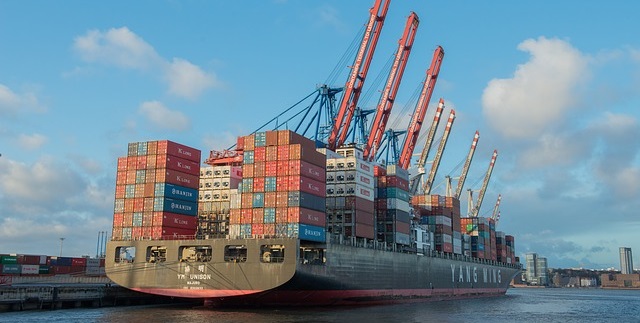
Gambia’s main exported goods
Gambia’s exports, while limited in scope, play a significant role in its economy. Although Gambia is one of the smallest countries in Africa, with limited natural resources, it leverages its geographic location along the River Gambia and access to the Atlantic Ocean to facilitate trade. Gambia’s main exported goods reflect its agricultural strengths and reliance on a few key industries. This includes a mix of agricultural products, seafood, and re-export goods, making its economy highly dependent on both seasonal harvests and international demand.
1. Groundnuts (Peanuts)
Groundnuts are Gambia’s largest export and have traditionally been the backbone of its economy. The climate and soil in Gambia provide ideal conditions for groundnut cultivation, which is also an important source of income for many rural families. Groundnuts from Gambia are exported primarily in their raw form, but some efforts are being made to increase value addition by processing them into oils and other products for export. The groundnut industry remains central to Gambia’s export portfolio and provides employment for a significant portion of the population.
2. Fish and Seafood Products
Fishing is another crucial sector in Gambia’s export economy, with seafood products such as fish, shrimp, and crab being among the main exported goods. The Gambia River and Atlantic Ocean offer abundant fish resources, which are harvested for both domestic consumption and export. Fish processing plants near coastal areas support this industry, and fish products are mostly exported to European and Asian markets. Fish is not only a major export but also a significant protein source for Gambians, making its management a priority for both the economy and food security.
3. Cashew Nuts
Cashew nuts have become an increasingly important export for Gambia. Like groundnuts, cashews thrive in Gambia’s subtropical climate, and demand for them has grown due to a rise in the popularity of cashews globally. Cashew farming is often done by smallholder farmers, and the government has encouraged the sector’s expansion through training and support programs. Cashews are mostly exported in their raw form, although there is a growing interest in establishing processing facilities to retain more value within the country.
4. Sesame Seeds
Sesame seeds are another valuable export crop for Gambia, known for their resilience in semi-arid climates. This has made them an attractive alternative crop for farmers, especially as demand for sesame in markets such as Asia and the Middle East has grown. Sesame farming is also labor-intensive, creating jobs and income opportunities for local communities. While still small in comparison to groundnuts and fish, sesame seeds are steadily growing as an export, contributing positively to the diversification of Gambia’s agricultural exports.
5. Fruits and Vegetables
Gambia exports a range of fruits and vegetables, with mangoes being among the most popular. The country’s climate is ideal for growing tropical fruits, which are increasingly in demand, especially in European markets. Exports of horticultural products are smaller than those of groundnuts or seafood, but they offer potential for growth, particularly in organic produce. The fruit and vegetable sector supports local farmers, particularly women, and provides opportunities for sustainable income in rural areas.
6. Wood Products
Gambia has a small but growing export market for wood products, mainly logs. However, there has been controversy surrounding this trade due to concerns about deforestation and illegal logging. In recent years, the government has introduced stricter regulations to curb illegal practices and promote sustainable forestry. This has impacted wood exports, but it also reflects Gambia’s effort to balance economic needs with environmental protection.
7. Re-export of Goods
Gambia’s geographic position makes it a hub for re-exports, particularly for goods going to neighboring countries like Senegal, Guinea-Bissau, and Mali. The re-export trade involves importing goods like electronics, vehicles, and textiles into Gambia and then exporting them to other West African nations. This trade is facilitated by Gambia’s favorable tax regime and relatively efficient port infrastructure. While re-exports do not contribute directly to domestic production, they are an important source of revenue and add to Gambia’s export profile.
8. Tourism-Linked Exports
Although not a traditional export, tourism contributes significantly to Gambia’s economy and indirectly affects exports. Tourist spending on local crafts, foods, and beverages supports local industries and encourages the production of souvenirs and artisanal goods, which are sometimes exported as well. Tourism thus provides an indirect boost to Gambia’s export sector by promoting demand for locally made products.
Challenges and Opportunities
Gambia’s reliance on a limited number of export goods creates economic vulnerabilities, especially as international market prices fluctuate. Agricultural exports, like groundnuts and cashews, are also highly seasonal and sensitive to climate conditions, which can impact production volumes and quality. Moreover, limited infrastructure and processing capabilities mean that much of Gambia’s exports are in raw form, reducing potential revenue.
Despite these challenges, Gambia has potential for diversifying its exports. The government has shown interest in developing agro-processing industries to add value to agricultural products and reduce dependency on raw material exports. Additionally, there are efforts to expand into organic and fair-trade markets, particularly in Europe, which could increase revenues for agricultural exports. Expanding tourism further and supporting artisanal exports may also provide more opportunities for growth in the export sector.
In conclusion, Gambia’s main exports of groundnuts, fish, cashews, sesame, and horticultural products reflect its agricultural strengths and strategic location as a trade hub. While the economy remains vulnerable to external factors, opportunities for diversification and value-added processing could help Gambia create a more resilient export sector, contributing to economic stability and sustainable growth.



Leave a Reply